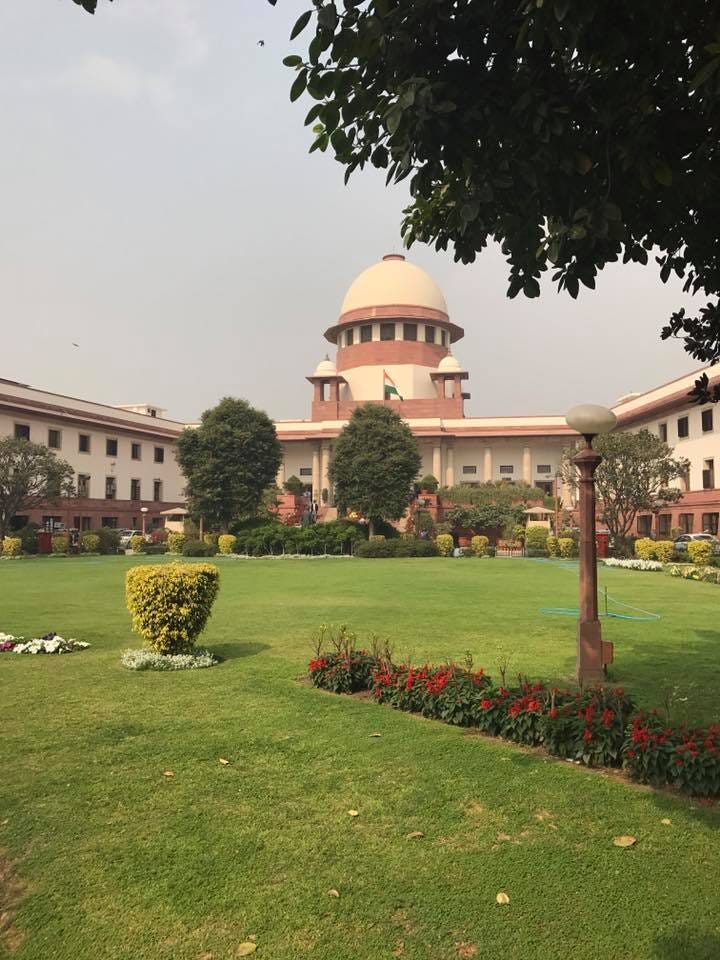Sexual Harassment in the Workplace in India
Sexual harassment in the workplace is a pressing issue that jeopardizes the safety, dignity, and well-being of women. As India develops and more women integrate into the workforce, spanning both the organised and unorganised sectors, the magnitude of this challenge amplifies. The evolution of legal provisions in India, especially the monumental Vishaka case, illustrates the Nation's commitment to ensuring women's rights. Yet, as the workforce landscape transforms, the urgency of this issue necessitates attention not just from HR managers, but from policymakers, governmental administrators, corporate leaders, NGOs, the media, and the judicial and police systems. It's imperative that a holistic and united approach be adopted to create a safe and respectful working environment for all women.
Historical Reverberations: Draupadi's ‘Vastraharan’
Draupadi's disrobing in the Mahabharata isn't just a tragic tale, but a poignant reflection of age-old power imbalances and gender injustices. Despite being wed to the mighty Pandavas, five formidable warriors, they were rendered powerless in her defense during that fateful dice game. Ultimately, it was the divine intervention of Lord Krishna that preserved her dignity.
Today, in an era where divine intervention cannot be their sole hope, women must be equipped and empowered to defend their own dignity. The fight for self-respect and justice isn't solely a woman's burden; it's a collective responsibility. Society, right-thinking individuals, and organizations, including the foundational unit of the family, must stand firmly beside her. Any attempt to stifle her voice with fears like "no one will employ you in the future" or "no one will marry you" is a stark reminder of the very biases and barriers that we must continually strive to dismantle. It's time we ensure that women don't just rely on tales of divine rescue but are supported by a society that champions their rights and dignity.
1. The Landscape Before Vishaka
Before the introduction of the Vishaka guidelines, sexual harassment in India was a grey area, situated in the backdrop of broader human rights violations. The Indian Penal Code (IPC) of 1860, a colonial-era legal document, did cover various sexual offences, but there wasn’t a dedicated provision specifically addressing workplace harassment.
One significant section of the IPC that did touch upon the subject, albeit obliquely, was Section 354, which speaks to "Assault or criminal force to a woman with intent to outrage her modesty." The text of the section states:
"Whoever assaults or uses criminal force to any woman, intending to outrage or knowing it to be likely that he will thereby outrage her modesty, shall be punished with imprisonment of either description for a term which may extend to two years, or with fine, or with both."
Notably, while the term "outraging the modesty" is culturally loaded and has been a subject of debate and interpretation, it did provide some recourse for women facing such offences. Additionally, offences under Section 354 are cognizable, which means that the police can arrest the accused without a warrant, and initiate an investigation without the magistrate’s permission.
However, the ambiguity of terms and the lack of specificity in addressing the nuances of workplace harassment made it evident that there was a pressing need for comprehensive guidelines like Vishaka. It wasn’t merely about addressing heinous crimes like rape but about giving a voice to countless women who faced varying degrees of harassment, often on a daily basis, within the confines of their workplaces. This need for specificity and clarity further underscores the significance of the Vishaka guidelines and subsequent legislative actions in addressing and rectifying gender-based injustices in professional environments.
2. The Landmark Vishaka Case and its Guidelines
The year 1997 witnessed a monumental shift in India's stance towards workplace harassment, owing largely to the profound implications of the Vishaka & Ors vs State of Rajasthan & Ors case. At the heart of this landmark judgment was the harrowing incident involving Bhanwari Devi, a social worker from Rajasthan, who was brutally raped in 1992 as retaliation for her efforts in preventing a child marriage.
The gravity of Bhanwari Devi's plight not only shook the nation but also galvanized a coalition of women’s rights groups. Led by Vishaka and other NGOs, they filed a Public Interest Litigation (PIL) in the Supreme Court, calling attention to the gaping void in legal provisions addressing sexual harassment at the workplace. The injustice faced by Bhanwari Devi echoed the challenges and fears of numerous women across the country, underscoring the urgency of the matter.
In response, the Supreme Court, recognizing the urgency and the broader implications for women's safety and rights, pronounced the Vishaka Guidelines. These weren't merely rules on paper; they provided an exhaustive definition of sexual harassment, underscoring the spectrum of behaviours that women face in professional settings. Importantly, the guidelines reinforced the accountability of employers, emphasizing their duty to ensure workplaces free from harassment, intimidation, and discrimination. This was accompanied by a structured complaint mechanism, laying the foundation for formal redressal systems within institutions. Furthermore, the guidelines also championed the cause of heightened awareness, emphasizing the need for sensitization and education at all levels of professional hierarchy.
Thus, from the distressing ordeal faced by Bhanwari Devi arose a defining framework that would influence India's legal and societal approach to workplace harassment for years to come. The Vishaka Guidelines not only signified a breakthrough in India's legal landscape but also bore testimony to the collective power of advocacy, activism, and judicial prudence.
3. The Sexual Harassment of Women at Workplace Act, 2013: A Legislative Milestone
The Vishaka Guidelines, while groundbreaking, were directives and not codified law in the traditional sense. Their introduction underscored the glaring absence of a comprehensive legal framework dedicated to addressing workplace harassment in India. To fill this legislative vacuum and enshrine these guidelines into enforceable law, the Indian Parliament, reflecting its commitment and the national imperative to prioritize women's safety, passed the Sexual Harassment of Women at Workplace Act in 2013.
This Act wasn't merely a reiteration of the Vishaka Guidelines; it expanded upon them, symbolizing the evolution of understanding and empathy towards the issue. One of the most significant inclusions was the extension of protections to domestic workers – a sector traditionally marginalized and bereft of many labour rights. Recognizing the fluidity and dynamics of modern workplaces, the Act also introduced the "extended workplace" concept. This acknowledged that harassment could occur not just within the physical confines of an office but in any place related to work, including transportation provided by the employer, conferences, training sessions, and social events connected to work.
Furthermore, the Act's enactment was a clear indication of the Central Government and Parliament's proactive stance on the matter. It wasn't just about responding to an existing problem, but also about setting a precedent for workplaces across India. Through this Act, the message was loud and clear: the safety and dignity of women in the workplace were now paramount in the Nation's legal and social consciousness, and transgressions would not be taken lightly. It marked a shift from mere guidelines to a robust, actionable framework, ensuring that women's rights in professional spaces were both protected and promoted.

4. Salient Features of the Act
Wide Applicability: The Act embraces both the organized and unorganized sectors.
Definition of Workplace: Encompassing various work-related locations and employer-provided transportation.
Internal and Local Complaints Committees: Institutions for grievance redressal in different workplaces.
Protection and Penalties: Safeguards against victimisation and penal consequences for non-compliance.
Resolution and Confidentiality: Promoting amicable solutions while preserving the privacy of involved parties.
Timely Inquiry: Emphasising speedy resolution of complaints.
5. Navigating the Complex Landscape of Harassment and Redressal
When embarking on the path of seeking justice against harassment, one must be prepared for a journey that demands both tenacity and determination. Initiating a complaint and traversing the often convoluted redressal process can be daunting. Yet, it's crucial to recognize that harassment is a complex issue that transcends traditional gender boundaries. While it's often framed within male-perpetrator and female-victim dynamics, the reality is that harassment can be perpetuated by anyone, irrespective of their gender.
However, as mechanisms to address harassment become more robust, there arises another concern: the misuse of these very mechanisms. There have been instances where unfounded allegations are made, leading to undue character assassination and tarnishing of reputations. Such instances not only harm the accused but also undermine the very essence of the protective measures in place. It's a delicate balance for organizations to ensure a just and fair process, safeguarding the rights of the complainant while ensuring that baseless allegations don't lead to unjust consequences. This highlights the pressing need for meticulous, unbiased investigations and emphasizes the importance of integrity on all sides of the issue.
6. Role of the Media: Responsible Reporting
In high-profile cases, the media's influence and responsibility are heightened. Given its vast reach, it is imperative for the media to exercise restraint, ensuring unbiased, ethical reporting that respects the privacy of the woman and all others involved. While some advocate for a purely fact-based approach, others see the media as a potential catalyst for change. However, it becomes problematic when the media prematurely assumes the role of a prosecutor, or worse, a persecutor, issuing judgments even before official inquiries conclude. The debate on the ideal role of media in such scenarios is contentious and unresolved.
7. The Horizon: Progress and Hope amidst Challenges
While India has made commendable advances in its quest to curb workplace harassment, the journey has been interspersed with its own set of challenges and delays. A glaring testimony to the pace of legislative action is the sixteen-year gap between the landmark Supreme Court judgment in the Vishaka case and the eventual parliamentary enactment of the pertinent law. More than a decade post-enactment, the comprehensive implementation of the Act remains aspirational, surprisingly even within the corridors of Central and State government organizations and reputed multinational companies known for their professional management.
However, the silver lining is undeniable. As the nation witnesses an increasing number of women breaking traditional molds, leaving the security of their familial homes, and climbing the professional hierarchy in diverse sectors – be it public, private, or the dynamic world of startups – the progress, though incremental, is palpable. It's not just about creating safer workplaces but fostering environments where women thrive without the looming shadow of harassment. This momentum, while appreciable, needs to be both sustained and amplified, resonating with India's evolving socio-economic landscape and aspirations of its women workforce.

Summarising and Looking Ahead
India's socio-cultural narrative, steeped in challenges, is evolving towards empowerment. As we advance, women, fortified by progressive legislation and an adaptive societal conscience, rise not just as survivors but as epitomes of strength, resilience, and grace.
Today's woman isn't bound by age-old conventions. She ardently guards her dignity, drawing her own 'Lakshman Rekha'—a personal boundary that remains inviolable. While these boundaries differ among individuals, external voices shouldn't dare challenge or redefine them. However, advocating for women's rights isn't solely a woman's duty. Society, in its entirety, must resist passive observation. Each one of us, irrespective of gender or status, is duty-bound to foster an atmosphere of respect and equality.
Historical portrayals, as exemplified by Shakespeare's "Frailty, thy name is woman," painted women with a brush of fragility. Contrarily, the modern Indian woman defies such notions. She stands tall, an embodiment of strength, determination, and spirit. As she restructures societal norms and asserts her rightful place, society must stride with her, upholding the respect and solidarity she deserves.
As our journey continues, change might appear incremental, yet it's steadfast. The antiquated sentiment of "Frailty, thy name is woman" has been replaced; today's Indian woman resonates with strength, spirit, and steadfastness.












Sir: Firstly, images reveal the story just as much the words,if not more.
My beef is with the word harassment. One can never sum up in one word the suffering , hurt, damage ,cruelty ,blemish, loss of sense of self worth-esteem plus over two hundred more constructs of behavioral science that she gets lashed with.
I have no education , wisdom or qualification to offer any solution , perhaps most of us don’t. This evil and menace wouldn’t survive this long .
One thing that I personally can say with conviction is self defense . Your physical strength oughta be compulsorily part of curriculum just as much English , science and math.
Thank you , getting addicted to your write ups. Keep them coming.
Cordially
An addict!
If nobody cares about the law and law enforcement agencies, the views of a social reformer and the apex court will fly over the head of a predator.